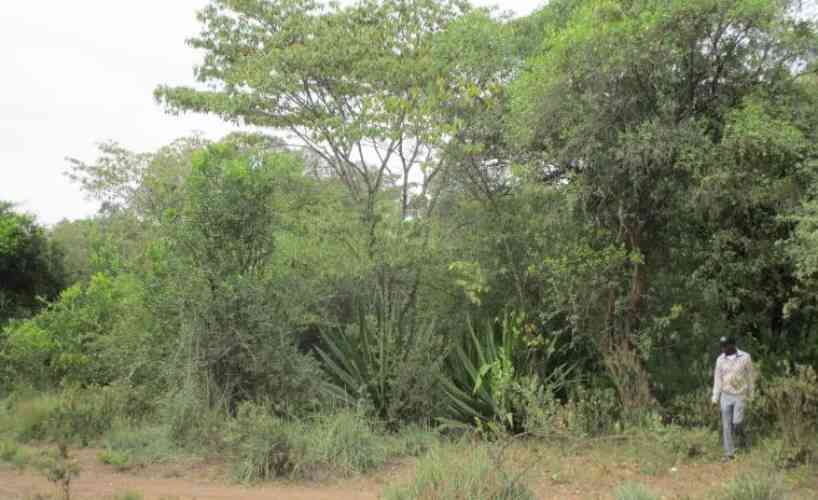NAKURU, KENYA: A series of in-depth studies have been carried out in Kenya to inform formulation of the REDD+ strategy and implementation framework.
REDD+ seeks to provide compensation to governments, communities, companies or individuals in developing tropical countries for actions taken to reduce GHG emissions from the forest sector. Its implementation involves the design and application of appropriate land and forest management practices, including enhanced forest sector governance, to support sustainable management of forest resources.
The REDD+ mechanism although focused on forestry it touches on land tenure, land use planning, protected areas and trade
The key challenges that may hinder Kenya’s implementation of REDD+ from a legislative perspective include lack of a National Environment Policy to guide the management of the environmental resources. REDD+ implementation will have to be preceded by a strategy.
Insecurity and unreliability of tenure especially in relation to Community Land where most of the REDD+ activities are expected to be conducted
lack of clarity and coherence on some forest related laws, including the criteria for defining “communities” in relation to ownership of community land, and the disconnect between the tenure regimes under the Forest Act 2005 and under the Constitution of Kenya 2010
Institutional challenges including lack of mutual supportiveness and cooperation among forest related institutions. This is expected to heighten with the entry of devolved government structure.
Forest institutions are also affected by lack of adequate resources and insufficient funding. lack of a mechanism for sharing REDD+ benefits
Recommendations: Inclusion of specific provisions on REDD+ in the relevant laws and policies, clarifying the roles and mandates of all the forest sector institutions in order to avoid overlaps and incoherence, crafting the rules for access and use rights and for benefit sharing, defining a national criteria and indicators (C&I) for sustainable forest management.
Other recommendations would include finalising legislation on community land and other Acts that actualize the national land policy Forest Governance and Sustainable development in Kenya
Kenya’s forests occupy a total area of 3.5 million ha equivalent to 6.9 per cent of Kenya’s total land area. The forestry sector contributes 3.6 per cent to Kenya’s Gross Domestic Product (GDP)
Forests are therefore important national assets because of their significant economic, environmental, social and cultural values.
Since the colonial era, forest governance has faced significant challenges.
From1942 when the colonial government appointed the first conservator to the 1990’s, Kenya has witnessed a massive reduction in the country’s forest cover from 60 per cent to just about 2 per cent due to several factors including increased population, land use changes, inappropriate (weak) legal frameworks and corruption, among others.
This was largely driven by the colonial “preservation and exploitation” policies, which also the post-independence governments adopted. Environmental issues were controlled by the government through a top-down approach.
Stay informed. Subscribe to our newsletter
After independence numerous initiatives were undertaken in environmental conservation and sustainable natural resource management.
A major policy shift in environmental governance in Kenya was witnessed in the run up to and after the Earth Summit held in Rio de Janeiro, Brazil in June 1992. The Rio Declaration and Agenda 21 exhorted governments to establish an effective legal and regulatory framework with a view to enhancing national capacities to respond to the challenges of sustainable development.
This resulted in increased integration of environmental concerns into development planning and environmental law and policy formulation in Kenya.
For example, The National Environment Action Plan (1994) stressed the need for a comprehensive environmental policy and law, and the Environment Management and Coordination Act (EMCA) was enacted in 1999 as a framework for environmental law.
The Forest Act, 2005 enshrined participatory forest management through community forest associations (CFA’s).
The Constitution of Kenya, 2010 has strong provisions on political and institutional matters associated with land, sound natural resource management and nature conservation. It has several implications on forest governance and the development of an appropriate legal framework for REDD+. The Constitution emphasizes on the need for good governance and seeks to ensure synergetic relations between the national and county level governments in the management, utilization and equitable benefit sharing of natural resource.
Land Tenure and Forest Governance in Kenya According to the United Nations, land tenure is the relationship, whether legally or customarily defined, among people, as individuals or groups, with respect to land.
Tenure defines the methods by which individuals or groups acquire, hold, transfer or transmit property rights in land.Secure land tenure will play a critical role in the design and distribution of benefits that may accrue from REDD+.
In relation to forests, land tenure includes ownership, tenancy and other arrangements for the use or conservation of forests, trees, and forest resources. Kenya’s Constitution categorizes land as private, public or communal.
The interplay between the different tenure systems will define carbon rights ownership in REDD+. In designing REDD+, the tenure regime adopted should also strive to satisfy various policy objectives such as: eficiency in land use by providing a smooth functioning land market and permits maximum productivity of land resources for all types of uses.
The system should also be responsive to various changes on demand; equity by ensuring that the tenure system provides reasonable access to all groups especially those of low income or vulnerable groups; compatibility with other policy instruments dealing with economic development and must not ontradict existing legislation; and continuity so that it avoids abrupt breaks in the existing political and cultural set up.
Forest related policies
Forest governance refers to the process of formulation, administration and implementation of policies, legislation, regulations, guidelines and norms relating to best practices for sustainable management of forests at local or national levels.
Kenya’s first forest policy was developed in 1968. This policy eventually became obsolete and a draft policy developed from mid-1990’s to early 2000’s becoming the main reference point in terms of articulation of key issues and objectives in the forest sector.
However, widespread public concern over the alarming rates of deforestation necessitated the enactment of the Forest Act, 2005 and the coming into force of a Forest policy in 2007.
Key features of the Act and policy are the creation of a Kenya Forest Service (KFS) to replace the Forest Department, enhanced civil society participation and partnerships in forest management, new bene?t sharing arrangements and the recognition of the important role of forests in livelihoods and sustainable development.
The Country is in the process of finalizing Forest Policy (2015) and Forest Act (2015), and so revising the 2005Act.
The main features of Forest Policy (2015) include: enactment of a revised forests law to implement the policy, mainstreaming of forest conservation and management into national land use systems, the clear division of responsibilities between public sector institutions, the devolution of community forest conservation and management, implementation of national forest policies and strategies and the deepening of community participation in forest through the strengthening of community forestry associations, and the introduction of benefit-sharing arrangements.
The preparation of a national strategy to increase and maintain forest and tree cover to at least 10percent of the total land area and for the rehabilitation and restoration of degraded forest ecosystems, and the establishment of a national forest resource monitoring system.
• The adoption of an ecosystem approach for the management of forests, and recognition of customary rights and user rights to support sustainable forest management and conservation.
•The establishment of national programmes to support community forest management and afforestation/reforestation on community and private land.
The preparation of national standards for forest management and utilization, and the development of codes of conduct for professional forestry associations
• The introduction of a chain-of-custody system for timber and wood products, and legal origin and compliance certificates for exporters of timber and wood products.
Kenya’s Vision 2030 aims at “a people living in a clean, secure and sustainable environment.”This objective provides a strong foundation for improving environmental management, including forest governance, in Kenya. Vision 2030 is therefore a critical pillar for the success of REDD+.
Kenya’s National Climate Change Response Strategy, 2010, aims to steer Kenya onto a climate-proof, low carbon development path.
It identifies the forestry sector, through REDD+, as one of the key sectors in which to implement climate change mitigation actions. The National Climate Change Action Plan (2013-2017) takes forward the implementation of the strategy. It gives a detailed breakdown of actions to be undertaken, institutions that will implement specific activities, time frames and costs. Planned activities cut across many sectors including health, agriculture, forestry and wildlife, environment, tourism, regional development authorities, water and irrigation, energy, roads and transport, gender, youth and sports, education and ICT. Many of the proposed activities will support Kenya’s REDD+ process by promoting afforestation, reforestation or forest conservation. Other policies and strategy related to forest include: the National Land Policy and National Environment policy among others.
The opinions, findings and conclusions stated herein are those of the author(s) and do not necessarily reflect those of the United States Department of State.
 The Standard Group Plc is a
multi-media organization with investments in media platforms spanning newspaper
print operations, television, radio broadcasting, digital and online services. The
Standard Group is recognized as a leading multi-media house in Kenya with a key
influence in matters of national and international interest.
The Standard Group Plc is a
multi-media organization with investments in media platforms spanning newspaper
print operations, television, radio broadcasting, digital and online services. The
Standard Group is recognized as a leading multi-media house in Kenya with a key
influence in matters of national and international interest.
 The Standard Group Plc is a
multi-media organization with investments in media platforms spanning newspaper
print operations, television, radio broadcasting, digital and online services. The
Standard Group is recognized as a leading multi-media house in Kenya with a key
influence in matters of national and international interest.
The Standard Group Plc is a
multi-media organization with investments in media platforms spanning newspaper
print operations, television, radio broadcasting, digital and online services. The
Standard Group is recognized as a leading multi-media house in Kenya with a key
influence in matters of national and international interest.








